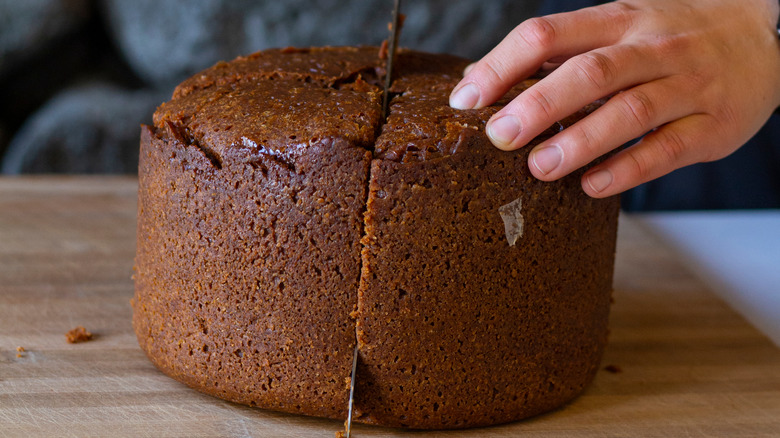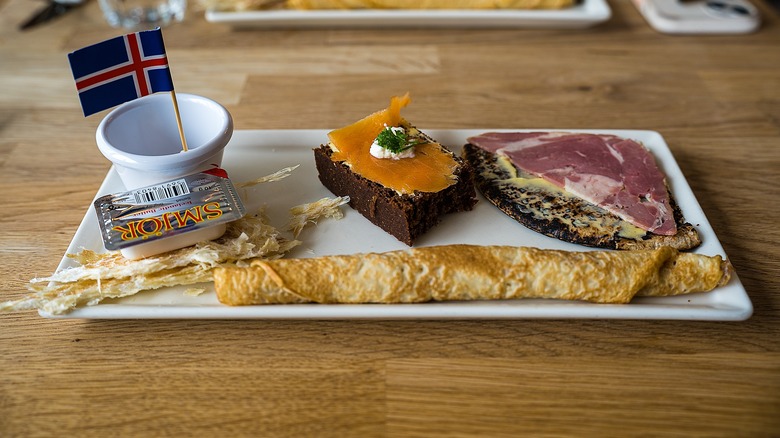The Traditional Icelandic Bread That's Baked With Hot Earth
Iceland is nicknamed the "land of fire and ice" and it's a fitting appellation for this beautiful island nation situated in the North Atlantic between Greenland and Northern Europe. The country's landscape is dotted with glaciers and more than 200 volcanoes (per Arctic Adventures). Several have erupted within the last dozen years, and one even unleashed its fury in 2022, according to the Smithsonian Institution's National Museum of Natural History.
This geological wonderland has naturally attracted the attention of volcanologists, who have come to study some of these active marvels. While their primary objective is conducting research, some scientists have also discovered that the heat emitted from the volcanoes can conveniently be used as a cooking source to heat up a mean hot dog while working in the field (via IFLScience).
But scientists aren't the only ones harnessing the earth's energy for making meals there. Native entrepreneurs and residents have long taken advantage of Iceland's abundant geothermal resources to prepare food. One restaurant in the Icelandic town of Hverageroi has used steam from the local hot springs to cook entrees (per The Globe and Mail). Then there is the traditional Icelandic bread that's baked in hot earth, a unique generational treat that persists to this day (via Northern Lights Iceland).
Using the earth as an oven
Why bake something in the oven when you have a natural heat source available outside? That's the story behind hverabraud, translated as "hot spring bread" (via Atlas Obscura). A traditional Icelandic dish, it's cooked underground using the steam heat of geothermal hot springs. It's also jokingly referred to as "thunder bread" due to its high-fiber content and what it can do to your body after the fact when you've eaten it. Sulphuric gasses anyone?
The cooking process requires digging a hole near a volcanic spring, placing the bread dough in a box, or covering it in a greased pan or pot and letting the warm earth slowly work its magic. Cooking times may vary. One YouTube video depicted a hot spring being used to bake buried bread for 24 hours while an approach shared by Salt + Spine takes 13 hours. Hverabraud, the end product, is a type of rye bread that's dark and heavy with a sweet taste that has been described as resembling gingerbread (per The Reykjavik Grapevine).
Some families have been using the underground cooking technique to make hverabraud for generations. It is believed to date back 100 or more years before electric ovens were widely available (via Thrillist). It is typically paired with butter and smoked meats or fish such as herring or trout. Though Icelandic rye bread is now often prepared in a conventional oven powered by geothermal energy, it's still enjoyed today (per The Norwegian American).

